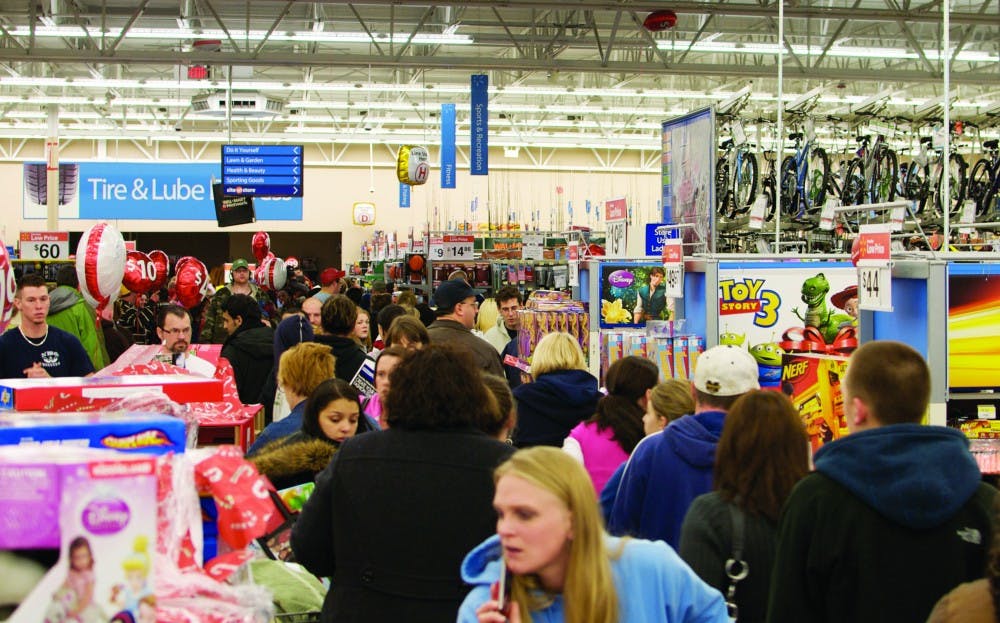Black Friday is a billion dollar industry. In fact, in 2016, the average shopper spent $900 on the discount day.
“Black Friday is by far the single biggest retail day,” said Michael Hicks, professor of economics and business research and director. “People are buying big ticket Christmas items that day.”
While more than 154 million people shopped in-store and online over Thanksgiving weekend in 2016, according to the National Retail Federation, 156 million people took advantage of Super Saturday — the last Saturday before Christmas — deals.
“The key to retail sales is how to get the most value per customer,” Hicks said. “So if you can sell TVs inexpensively on Black Friday, you can get sales to lots of people who don’t normally buy.”
Since 2012, TVs and other electronics have been the most popular item to buy over the holidays, according to the National Retail Federation (NRF).
“The things that are in demand vary a lot from year to year,” Hicks said. “It’s hard to know what will be the big item this year. Years ago it was flat screen TVs, but now everyone has one of those.”
For retailers, around 30 percent of annual retail sales occur between Black Friday and Christmas, according to the NRF.
“Black Friday has kept some retail stores open that wouldn’t make it otherwise,” Hicks said. “Retail stores are struggling to compete against brick and mortar stores and e-commerce.”
This is because Black Friday is no longer in-store only. Over half of Thanksgiving weekend shopping is done online, reported the NRF.
“I don’t think this shows that the economy is doing bad, just that the retail model is changing,” Hicks said. “We are now going to a model of e-commerce.”
While retailers use Black Friday for a boost in profits, Hicks said consumers use the day to save money.
“If you have a set amount of money that you intend to spend and you only spend that money and you get more product that you would have otherwise, then yes, you save money,” said Rebecca VanMeter, assistant professor of marketing. “It really depends on the individual consumer and how cautious they are.”
About 36 percent of shoppers buy items on sale on Black Friday, according to the NRF.
“These once-a-year deals could make consumers spend more than they actually would,” VanMeter said.
From the day before Thanksgiving through the day after Black Friday, the average discount across prices was 2.5 percent or less for the entire shopping period.
Walmart’s average discount was 3.6 percent or less, while Target’s average discount was the highest at 6.8 percent, according to Time Magazine.
“There is such a large profit margin on an item and the bulk allows retailers to cut price back,” VanMeter said. “The hype and buzz and excitement around it allows them to sell more. Retailers have these items all year, they are just priced higher.”
VanMeter emphasized that while Black Friday showcases big savings, consumers should be careful to not spend more than normal.
Contact Liz Rieth with comments at ejrieth@bsu.edu or on Twitter at @liz_rieth.





